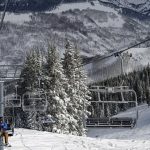At the companys Investor Day presentation last week, adidas-Salomon AG CFO Robin Stalker discussed the difficulties that the company is having in the critical U.S. market, revealing that North America full-year sales for 2003 are expected to come in below last year's level.
“Our backlogs have continued to deteriorate”, Stalker said. “Q3 will show a significant decline.” Fourth quarter backlog is expected to drop as well. Stalker did say that “sales will exceed backlog in the coming months”, indicating a hopeful shift to more fill-in business. Sales were short of backlog levels last year, as cancellations reduced on-order.
North American sales are expected to grow again in 2004. Stalker blamed the highly promotional U.S. market, which continued through Back-to-School, as well as the retro trend. The company sees the return of performance products to the U.S. market as key to their growth.
Last year, adidas-Salomon's full-year sales were 6.5 bn, or $6.1 bn, of which roughly 2.0 bn, or $1.9 bn, was generated in North America.
The CFO said adidas-Salomon is on track to grow net profit between 10% and 15% this year. Sales (in constant currency) is expected to grown 5%, with gross margin in the 42-43% range. Stalker said, “We will grow the bottom line significantly faster than we will grow the topline.”
Last Monday, the company announced that Ross McMullin, president and CEO of adidas America, will take a leave of absence, to be replaced for an interim period by Jim Stutts, current head of the Asia/Pacific region.
McMullin was diagnosed with stage-four colorectal cancer in February 2001, and had seen the cancer reduced on a therapy of chemotherapy and radiation treatments. The active McMullin, who continued to work full-time and more through the treatments, reportedly suffered a recurrence of the cancer in February of this year.
“We respect Ross' decision and admire his strength and courage in fighting this battle. His contribution and commitment to our organization over the last three years have been tremendous,” said Herbert Hainer, chairman and CEO of adidas-Salomon AG, in a company press release.
Mr. Stutts has been with adidas and the TaylorMade-adidas Golf division for 16 years, including five years as COO at adidas America and moving to TM-aG in June 1999, when he was appointed CEO of the division. Stutts moved to the A/P position in January of this year.
“In close collaboration with our executive board, Jim will build on the turnaround Ross and his team initiated in 2002 in order to secure a strong market position in the region,” Hainer said.
Christophe Bezu, currently managing director of adidas Japan, will succeed Stutts as head of the fast-growing Asia Pacific region. Bezu, a French national, has been with adidas since 1988. Rob Langstaf, currently COO of adidas Japan, will succeed Bezu as managing director of Adidas Japan. He has been with adi since 1991.
Looking ahead, the company's North American business will benefit from the start of the NBA season, Stalker said, as basketball products are one of the company's growing businesses.
Some analysts disagreed with Stalker about the quick turnaround in the U.S.
“Other firms are reacting faster to changes in the U.S. market,” said Heino Ruland, a market analyst at Steubing Brokerage. “I think it is ambitious to starting talking about a sustainable recovery for 2004. Normally consumption only improves some time after an economic upturn.”
Rolf Reinschmitt, global head of adidas Sport Performance division, said the company will focus on Running, Basketball and Apparel as growth drivers in 2004, combined with a primary focus on Soccer, promising to “dominate” the European Football Championship next year in Spain and Portugal. The other key focus for 2004 will be the Athens Olympics.
adidas has a goal of becoming the number one brand in Running by 2006, which will require double-digit annual growth.
In footwear, adidas sold one million pairs of Clima Cool shoes in 2002 and will sell 3.5 million pairs in 2003, with plans for four million pairs in 2004.
In the A3 line, adidas will add what they claim is the first mechanical midsole structure and is said to priced “aggressively”, understanding adis difficulty at the $100+ product this year. The focus will be Running and Basketball.
The other new key technology, Ground Control System, was cross-developed with Salomon, with adidas getting all categories except Adventure Trail Racing. The shoes feature a new suspension system.
Basketball, which will be focused on the companys three key athletes, is also expected to see double-digit growth in 2004. Tracy McGrady, Kevin Garnett and Tim Duncan will each have their own technology, with McGradys new TMAC4 matched up with HUG technology, which is positioned as the “first laceless basketball shoe”.
Outside of footwear, the company is heralding the Official EURO 2004 Match Ball, which is first thermal bonded stitchless ball. In apparel, adidas is pointing to great progress in the global launch of the Clima Cool apparel, which is expected to ship three million units this year, beating the original two million unit projection. adidas expects to ship five million units in 2004.
The company also revealed that Bill Sweeney, former SVP/GM for Reebok North America, has been appointed head of European Apparel. Sweeney, who also ran Asia Pacific for Reebok, was most recently running the Ellesse unit out of the U.K. for Pentland.
As Salomon Looks to Grow Apparel…
Salomon president Jean-Luc Diard said during his presentation last week that his division, which includes Mavic in Cycling, Arcteryx in Outdoor, Bonfire in Snowboard and Cliché as their European Skateboard line, saw sales “pretty much” double since 1997.
However, growth is challenged by currency exchange issues with the U.S. and Japan. Citing the “significant decline” in the Japanese market, Diard said Salomon will sell just 500,000 to 600,000 pairs of skis this year compared to over 2.8 million pairs sold in 1997. Diard said the company has seen a 20%+ swing in currency. Fifty percent of Salomon sales are done in the U.S. Dollar and the Japanese Yen.
Diard did claim that Salomon is still number one in winter sports. He showed slides that indicated that the Salomon business is now roughly 50/50 winter/summer after being 90/10 in 97 and 100% winter 10 years ago.
The In-line Skate category is also challenging. Diard said that the market will be just four million units this year versus 14 million units when they got in the business. He said that the key price-point here is at $99 and it is tough to make money at that range.
The Salomon brand will pick up some benefits from the ArcTeryx relationship for the first time, adding high-end Gore-tex jackets in the line that were co-developed with their new sister company. Diard said that Salomon will dropping price points in their soft shell category.
Diard said that production is now 15% in company-owned facilities and 85% in contract manufacturing. He said that 56% of the contract work is done in Europe and 44% is in Asia.
The net-net is that Salomon sees flat sales and earnings in 2003 compared to last year, with strong growth in soft goods and cycling and tight expense control offset by negative currency effects and tough in-line skate markets.
And TM-aG Sees Double-Digit Growth
The honors presenting the TaylorMade-adidas Golf division strategy went to John Guest, Managing Director of TM-aG Europe. Guest started his presentation by attempting to explain to the audience Coefficient of Restitution, or COR, and the impact of rulings last year by the USGA on TaylorMades high-COR drivers.
Seems that after the USGAs flip-flop on the issue of COR limit forced TM-aG to pull from U.S. dealers the R-series product that featured a driver in excess of the .830 COR limit. The company essentially flooded the European and Asian markets with the excess goods in the first quarter of 2003. Guest said Europe saw stronger sales in Q2 as the goods worked their way through the system.
Guest said all TM-aG regions made plan in Q3.
He also pointed to a strong performance in adidas Golf apparel and footwear, which is experiencing double-digit growth. The group is launching a new high-end line of apparel that will be sold into the specialty and resort channel under the Flaga label.
For 2004, TM-aG is looking to Metalwoods to lead growth for the year. Guest said that we are entering the “Golden Age” of golf, intimating that the company has a number of new technologies up their sleeve through 2007. The company will add a driver with a monster 440cc head, with plans to launch a 460cc head in 2004.
Guest also commented on the companys failed bid to pull the Top-Flite Golf Company from Callaways grasp in the 363 auction process in September. He said the value of Top-Flite “got a little nuts” in the auction. He also said that, “sometimes things come back to you at half price”, intimating that Callaway could potentially stumble and be forced to sell the company off at a loss. He went on to tout the positives with TM-aGs own integration of the Maxfli ball brand in the family.
>>> The value may have gotten a “little nuts”, but TM-aG may have forced a competitor to overpay for Top-Flite. Only time will tell. Callaway had no choice, they had to win the deal












